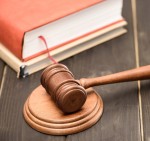China: Revised Guidelines for Patent Infringement and Other Judicial Developments

 On 20 April 2017, the Beijing High People’s Court officially issued the Revised Guidelines for Patent Infringement Determination, which stipulate the judicial rules and principles applicable to patent infringement cases within the Court’s jurisdiction. In particular, the Revised Guidelines provide, for the first time, guidance on current hot topics, such as standard-essential patents (SEPs) and design patents covering graphic user interface (GUI). These, together with recent patent infringement rulings demonstrate the ongoing improvement in the patent regime in China.
On 20 April 2017, the Beijing High People’s Court officially issued the Revised Guidelines for Patent Infringement Determination, which stipulate the judicial rules and principles applicable to patent infringement cases within the Court’s jurisdiction. In particular, the Revised Guidelines provide, for the first time, guidance on current hot topics, such as standard-essential patents (SEPs) and design patents covering graphic user interface (GUI). These, together with recent patent infringement rulings demonstrate the ongoing improvement in the patent regime in China.
Revised Guidelines for Patent Infringement Determination
In an effort to improve the quality of judicial practice, address outstanding problems and unify the judicial standards of patent infringement cases, the Beijing High People’s Court recently issued the Revised Guidelines for Patent Infringement Determination[1]. The revision incorporated the latest laws, regulations and judicial interpretations.
The Revised Guidelines include 153 articles divided into six aspects that cover a number of topics including determination of scope of protection and infringement of invention patents, utility model patents, and design patents, determination of acts of patent infringement, and defense in patent infringement cases.
Specifically, the revision addresses the following main aspects:
- Refined the principles and methods of patent claim construction. In particular, it added the principle of compliance with the object of invention (Article 4) as well as the doctrine of claim differentiation (Article 17) for claim interpretation. Also, interpretations of certain technical contents such as usage environment features (Article 24) and name of subject matter, including, field of application, use or structure were specified (Article 25);
- Addressed the issue of interpretations of functional limitations (Articles 18-19) and rules for determination of infringement of claims with such limitations (Article 42), in addition to refining the rules for determining infringement by equivalents (Articles 44-64);
- Improved and refined rules for design patent infringement as well as determination of acts of joint patent infringement and indirect patent infringement (Articles 116-122). These were made based on Interpretation by the Supreme People’s Court on Issues Concerning the Application of Laws in the Trial of Patent Infringement Dispute Cases (II) (2016) [2];
- Added rules concerning GUI-related design patents, based on latest cases and experience in China as well as other countries, defining the protection scope of GUI design patents, while including dynamic GUIs as well as static GUIs (Articles 73 and 77). It was also specified that that the design space and the prior design condition of the relevant design feature can be considered for determining whether the design is the same or similar as a previous one (Article 83);
- Added rules with respect to standard-essential patents (SEPs) based on the latest cases and experience in China as well as other countries, addressing the issuance of an injunction relief in SEPs-related litigation, and the obligations of the patent holder and the accused party during license negotiation on “fair, reasonable, and non-discriminatory ” (FRAND) terms (Articles149-153); and
- Added rules for patents obtained in bad faith, stipulating that the court may reject the plaintiff’s claim if the accused party provides evidence and proves that the patentee has obtained the patent in bad faith (Articles 126-127).
The Revised Guidelines standardize judicial rules and principles in patent infringement cases and provide positive indications of China’s continuous efforts to be in line with international patent practice. It is believed that these revisions provide a better regime for more easily enforceable patent rights in China. The issuance of the Revised Guidelines not only increases predictability of judgement in patent related cases, but also provides an improved judicial environment for implementing an innovation-driven development strategy.
Although the Revised Guidelines are applicable to local cases under the jurisdiction of the Beijing High Court, they nevertheless play an important and influential role with reference to judicial practice in other jurisdictions in China.
Recent Rulings in Patent Infringement Cases
Recently, the Special IP Court in Beijing published a ruling on patent infringement between Hengbao Co., Ltd and Watchdata Group, awarding 50 million Yuan ($7.25 million) compensation – the highest amount of compensation since establishment of the Special IP Court in Beijing. This is also the first time that the Special IP Court confirmed that hourly attorney fees were acceptable.
Another recent case of patent infringement decided by the Quanzhou court ordered Samsung Electronics’ mainland subsidiaries to pay 80 million Yuan ($11.60 million) to Huawei Technologies for patent infringement. This is the first victory of a Chinese firm against Samsung vis-a-vis legal challenges over intellectual property, and could mark a major shift in the global smartphone market.
Conclusion
The decisions in these recent cases, together with the issuance of the Revised Guidelines, are in line with China’s resolve to reinforce the intellectual property protection in China, Innovators should consider these positive developments as being strong indications for the importance of patents rights in China and the improved IP regime in favor of holders for Chinese IP.
[1] https://bjgy.chinacourt.org/article/detail/2017/04/id/2820737.shtml
[2] https://www.lexology.com/library/detail.aspx?g=1d60a3c8-9e1b-4760-b46f-a974961dc081
This article is provided for general information only. It is not intended as legal advice or opinion and cannot be relied upon as such. Advice on specific matters may be provided by our group’s attorneys.
